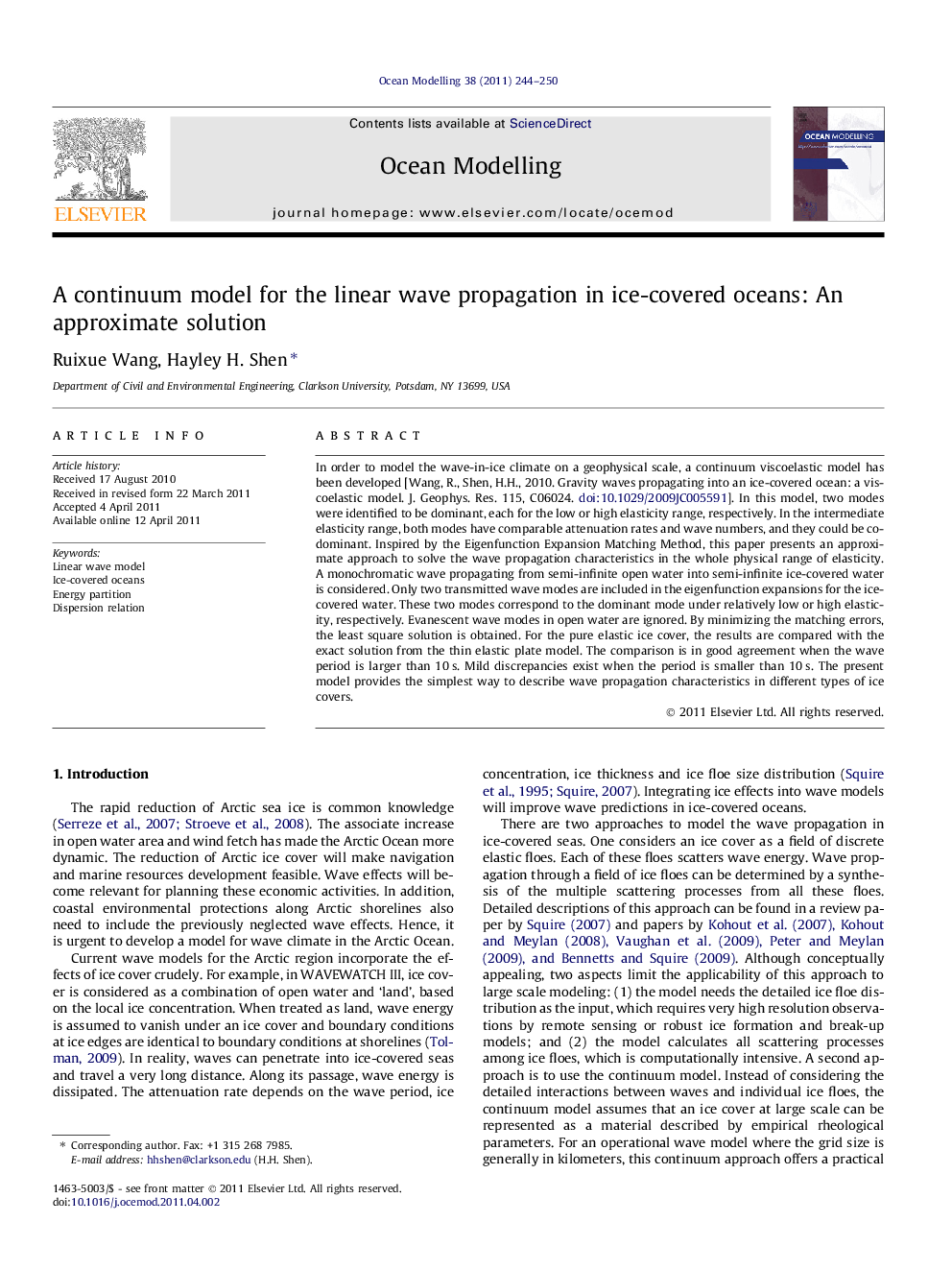| Article ID | Journal | Published Year | Pages | File Type |
|---|---|---|---|---|
| 4552298 | Ocean Modelling | 2011 | 7 Pages |
In order to model the wave-in-ice climate on a geophysical scale, a continuum viscoelastic model has been developed [Wang, R., Shen, H.H., 2010. Gravity waves propagating into an ice-covered ocean: a viscoelastic model. J. Geophys. Res. 115, C06024. doi:10.1029/2009JC005591]. In this model, two modes were identified to be dominant, each for the low or high elasticity range, respectively. In the intermediate elasticity range, both modes have comparable attenuation rates and wave numbers, and they could be co-dominant. Inspired by the Eigenfunction Expansion Matching Method, this paper presents an approximate approach to solve the wave propagation characteristics in the whole physical range of elasticity. A monochromatic wave propagating from semi-infinite open water into semi-infinite ice-covered water is considered. Only two transmitted wave modes are included in the eigenfunction expansions for the ice-covered water. These two modes correspond to the dominant mode under relatively low or high elasticity, respectively. Evanescent wave modes in open water are ignored. By minimizing the matching errors, the least square solution is obtained. For the pure elastic ice cover, the results are compared with the exact solution from the thin elastic plate model. The comparison is in good agreement when the wave period is larger than 10 s. Mild discrepancies exist when the period is smaller than 10 s. The present model provides the simplest way to describe wave propagation characteristics in different types of ice covers.
► A simple wave-in-ice model is proposed for all types of ice. ► The dispersion relation is examined for a finite thickness viscoelastic ice cover. ► Two modes are identified to be the most important. ► Ignore evanescent and “near” evanescent modes. ► Energy partition between the two modes is determined.
